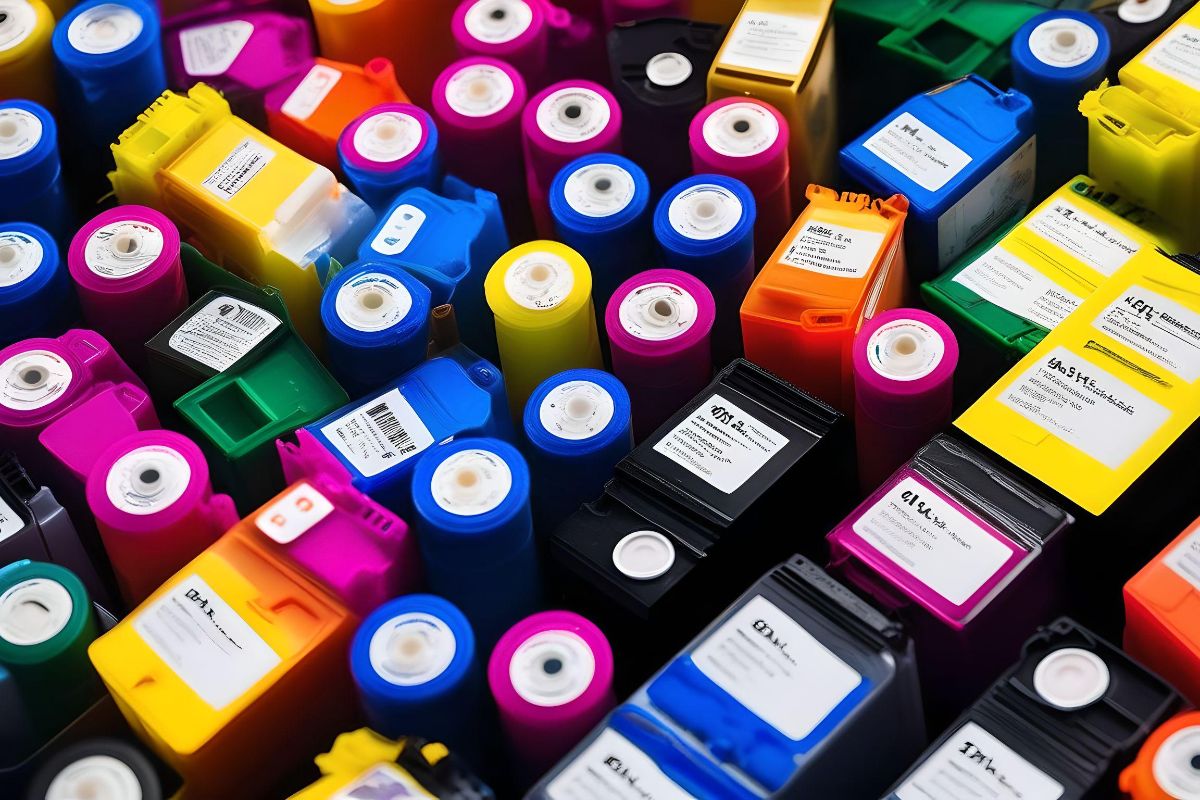
In today’s digital age, printing remains an essential aspect of daily life, whether for personal or professional purposes. Inkjet printers have become ubiquitous due to their versatility, affordability, and ease of use.
At the heart of these printers are ink cartridges, the vital component responsible for delivering high-quality prints. However, understanding these cartridges for ink and their various types can be overwhelming for many consumers. In this comprehensive guide, we’ll explore the different types of ink cartridges and their uses.
Introduction to Ink Cartridges
Ink cartridges are vital components of inkjet printers, storing ink for printing documents and images. They come in various sizes, colors, and types to cater to different printing needs. Designed to fit specific printer models, they are replaceable once the ink runs out. Despite their environmental impact, efforts are underway to promote recycling and develop eco-friendly alternatives. Overall, ink cartridges offer versatility, customization, and compatibility, making them essential for quality printing.
Moreover, the evolution of ink cartridge technology has led to the development of various types, each offering distinct advantages. Standard ink cartridges are suitable for everyday printing tasks, while high-capacity cartridges are ideal for heavy users or businesses with significant printing demands. Additionally, specialty cartridges, such as those optimized for photo printing or formulated for specific paper types, provide enhanced output tailored to specific applications.
One of the notable features of ink cartridges is their compatibility with specific printer models. Printer manufacturers design cartridges to precisely fit their respective printers, ensuring seamless integration and optimal performance. This compatibility aspect simplifies the replacement process, as users can easily identify the appropriate cartridge for their printer model, minimizing the risk of compatibility issues or print quality discrepancies.
Types of Ink Cartridges
Original Equipment Manufacturer (OEM) Cartridges
OEM cartridges are manufactured by the same company that produces the printer. They are designed to work seamlessly with their respective printer models, ensuring optimal performance and print quality. While OEM cartridges are known for their reliability, they can be more expensive than other options.
Compatible Cartridges
Compatible cartridges are third-party alternatives to OEM cartridges. They are designed to meet or exceed the specifications of OEM cartridges and are often more affordable. Despite their lower cost, compatible cartridges can deliver comparable print quality and yield, making them a popular choice for budget-conscious consumers.
Remanufactured Cartridges
Remanufactured cartridges are OEM cartridges that have been used once and then refurbished. They undergo a thorough cleaning and refilling process before being resold. Remanufactured cartridges offer a more eco-friendly alternative to single-use cartridges and are typically priced lower than OEM cartridges.
Refillable Cartridges
Refillable cartridges are designed for multiple uses, allowing users to refill them with ink once they run dry. These cartridges often come with refill kits, enabling users to replenish the ink themselves. While refillable cartridges can be cost-effective in the long run, they require careful handling to prevent ink spills and maintain print quality.
Understanding Ink Types
In addition to different cartridge types, inkjet printers use various types of ink to produce prints of varying quality and durability. Common types of ink include:
Dye-Based Ink
Dye-based ink is composed of water-soluble colorants and is known for producing vibrant and colorful prints. It is ideal for printing photos and images due to its ability to accurately reproduce colors. However, dye-based ink is more susceptible to fading over time and is less resistant to water and smudging.
Pigment-Based Ink
Pigment-based ink contains tiny solid particles suspended in a liquid solvent. It produces prints with sharper text and enhanced durability, making it suitable for documents and archival prints. Pigment-based ink is more resistant to water and fading, making it ideal for prints that require longevity.
Specialty Inks
Specialty inks include options such as archival ink, which is designed for long-term preservation, and UV-resistant ink, which offers enhanced protection against fading caused by exposure to sunlight. These inks cater to specific printing needs and are often used by professionals and enthusiasts.
Choosing the Right Ink Cartridge
Selecting the right ink cartridge depends on factors such as printing needs, budget, and desired print quality. Consider the following tips when choosing an ink cartridge:
Assess Your Printing Needs
Determine whether you primarily print documents, photos, or a combination of both. This will help you decide between dye-based and pigment-based ink cartridges.
Consider Your Budget
Evaluate the cost of both the printer and the cartridges. While OEM cartridges may offer superior quality, compatible and remanufactured cartridges provide a more affordable alternative without compromising on performance.
Check Printer Compatibility
Ensure that the ink cartridge is compatible with your printer model. Using incompatible cartridges can result in poor print quality and potential damage to the printer.
Evaluate Print Quality
If print quality is paramount, opt for OEM cartridges or high-quality compatible cartridges. Consider factors such as color accuracy, sharpness, and longevity when assessing print quality.
Maintaining Your Ink Cartridges
Proper maintenance of ink cartridges is essential for prolonging their lifespan and ensuring consistent print quality. Follow these tips to maintain your ink cartridges:
Store Cartridges Properly
Store unused cartridges in a cool, dry place away from direct sunlight and extreme temperatures. Avoid exposing cartridges to air for extended periods to prevent ink from drying out.
Print Regularly
Regularly printing prevents ink from drying out and helps maintain the performance of your printer. If you anticipate prolonged periods of inactivity, consider printing a test page periodically to keep the ink flowing.
Clean Printer Heads
Periodically clean the printer heads to remove any dried ink or debris that may affect print quality. Most printers have a built-in cleaning utility that can be accessed through the printer settings menu.
Use Genuine Supplies
Whenever possible, use genuine ink cartridges recommended by the printer manufacturer. Genuine cartridges are designed to work seamlessly with the printer and ensure optimal performance and print quality.
Conclusion
Ink cartridges play a crucial role in delivering high-quality prints from inkjet printers. By understanding the different types of ink cartridges and their uses, consumers can make informed decisions when selecting cartridges for their printing needs. Whether opting for OEM cartridges, compatible alternatives, or refillable options, choosing the right ink cartridge can result in cost savings and superior print quality. With proper maintenance and care, ink cartridges can continue to provide reliable performance, ensuring crisp, vibrant prints for years to come.









